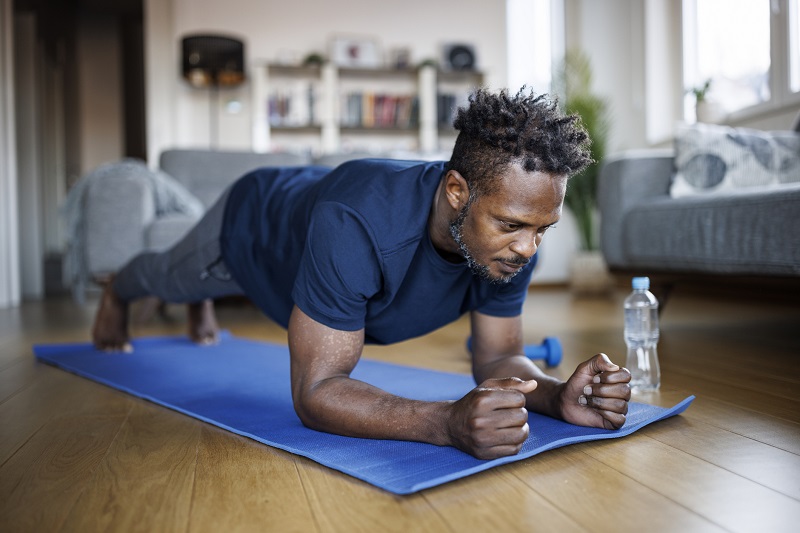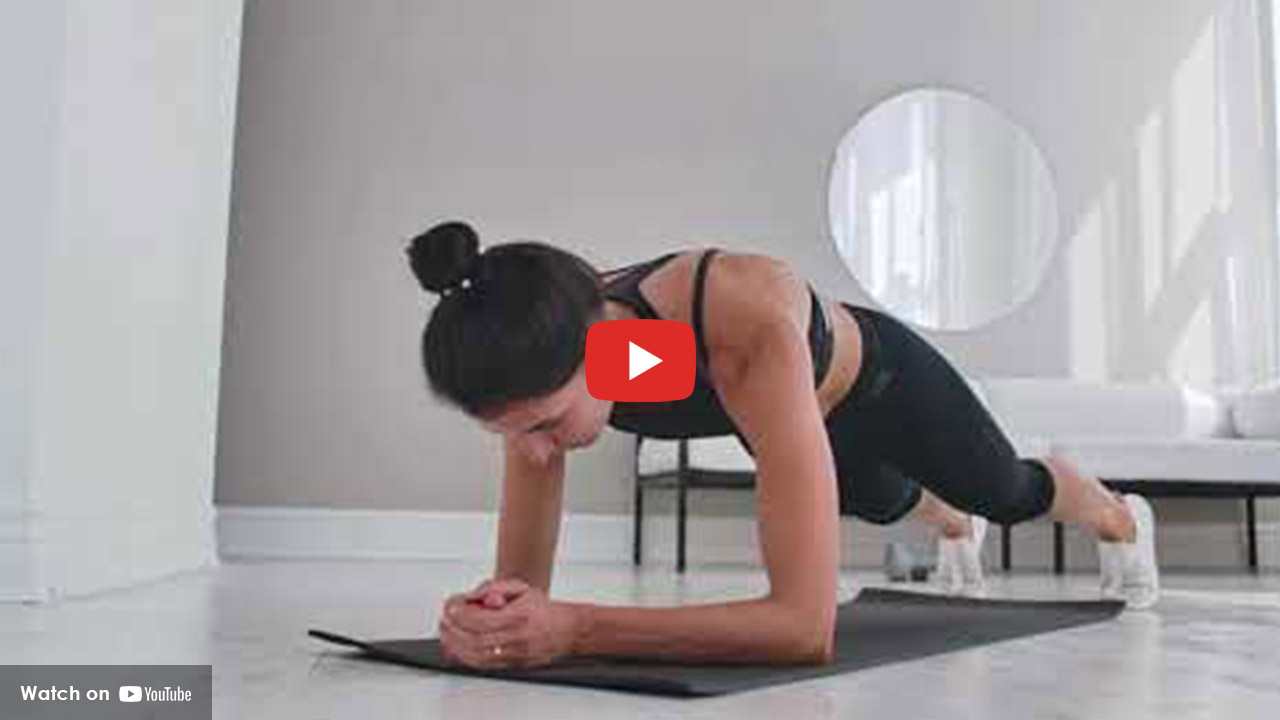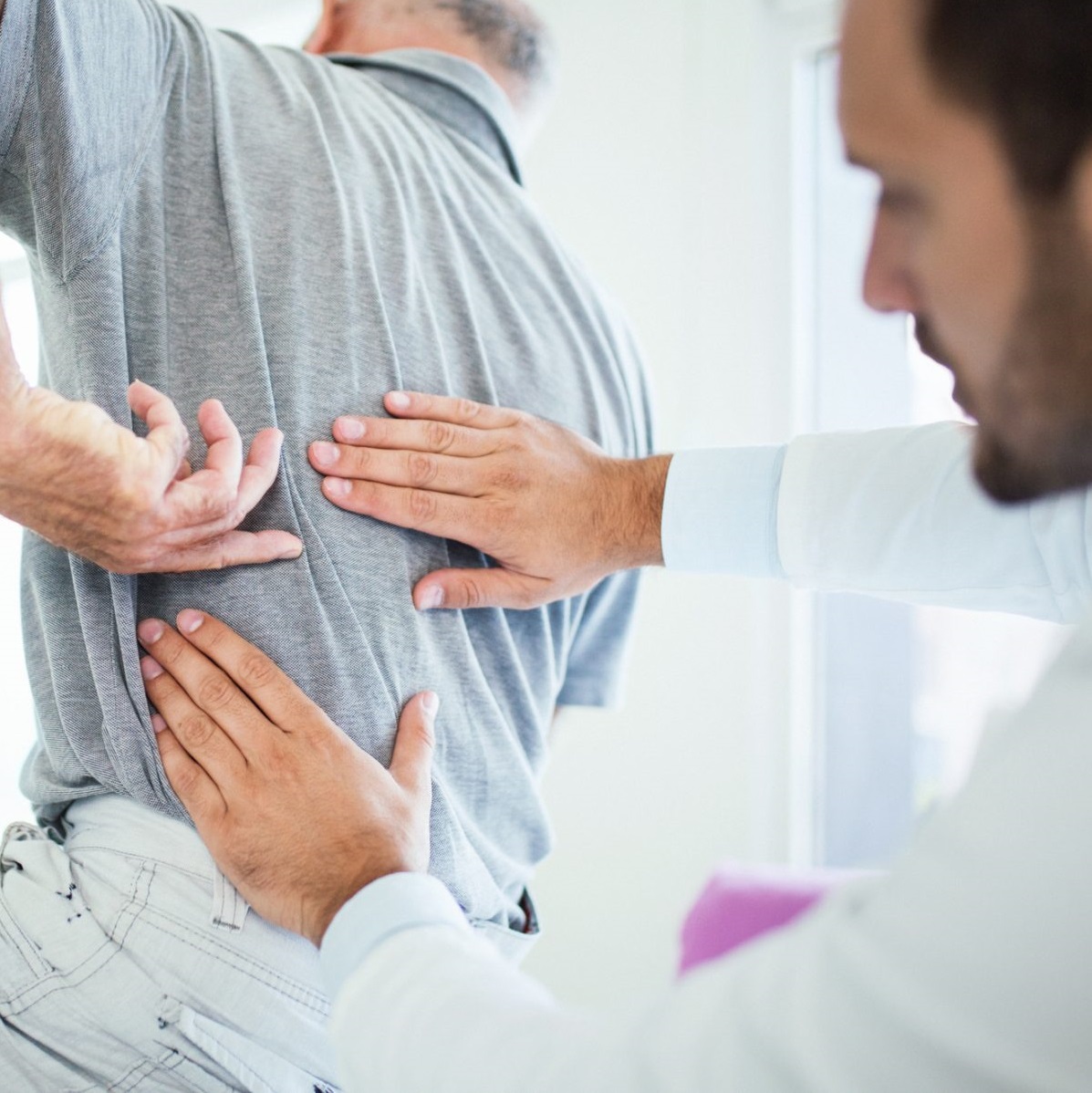5 Easy Spinal Stenosis Exercises

December 28, 2023
When the spinal canal narrows, crowding the spinal cord or nerve roots, it’s known as spinal stenosis. Pressure on the spinal cord or nerve roots may cause unwanted symptoms, but exercises may help.
Spinal stenosis is typically caused by arthritis, but some people are born with a smaller canal making them more susceptible at a younger age. Bone and ligament hypertrophy (growth or thickening) shrink the spinal canal, squeezing the spinal cord or the neighboring nerves.
“Spinal stenosis often develops gradually, and it’s most common among adults 50 and over,” says Patrick Roth, M.D., board-certified neurosurgeon and chairman, Division of Neurosurgery at Hackensack University Medical Center. “Some people don’t notice any symptoms, while others may need to consider surgery due to the severity of their symptoms.”
The exercises below may help with some of the symptoms, but they will not make the spinal canal larger.
Symptoms of Spinal Stenosis
Spinal stenosis commonly affects the neck or the lower back. People with spinal stenosis may experience symptoms such as:
- Numbness
- Tingling
- Neck or back pain
- Leg cramps
- Sciatica
- Muscle weakness in the arms or legs
- Balance problems
- Difficulty walking
- Bladder or bowel problems
- Sexual dysfunction
How Exercise Can Improve Spinal Stenosis
If your spinal stenosis causes discomfort, your doctor may recommend exercises to minimize symptoms. Through exercise, you may build strength and improve your flexibility, helping you stay active.
Some research has shown that strengthening the core muscles helps improve spinal stenosis symptoms. Targeting your core strengthens muscles that support your spine, which may ease your symptoms.
These five exercises may help you counter the effects of spinal stenosis:
Plank Exercises
Planks are commonly recommended to people who are trying to strengthen their core. These two plank exercises may help to improve spinal stenosis symptoms:
Traditional plank.
- Lie on your stomach with your elbows bent and your hands near your shoulders. Lift your body, leaning on your forearms and toes, staying parallel to the floor.
- Hold your body in this position, without letting your hips or stomach sag. Remain in place for 30 seconds, then relax to the floor.
Side plank.
- Lie on your left side, knees bent, your left elbow directly under your shoulder. Lift your hips, keeping your body straight, balancing on your elbow and knees.
- Remain in this position for 10 to 30 seconds, then lower your hips. Repeat the exercise while lying on your right side, leaning on your right elbow.
Other Exercises to Try
These exercises are also recommended to help improve symptoms of spinal stenosis:
- Pelvic tilts. Lie on your back, knees bent, feet on the floor, arms at your sides. Slowly push the small of your back into the floor, tightening your stomach muscles.
- Hold the position for 10 seconds, then return to your starting position. Repeat 10 times, naturally tilting your pelvis as your lower back touches the floor.
- Hold the position for 10 seconds, then return to your starting position. Repeat 10 times, naturally tilting your pelvis as your lower back touches the floor.
- Knee to chest stretches. Lie on your back, then pull both of your knees into your chest. Clasp your bent knees, holding the position for 30 seconds, then lower your legs.
- Next, pull only one knee to your chest, keeping the other leg lying flat. Hold your leg behind your knee for 30 seconds, then lower the leg.
- Repeat each of these exercises 5 times. For the single knee stretches, alternate lifting each knee to your chest 5 times.
- Standing quadriceps stretches. Stand near a sturdy chair, holding on for support with your right hand. Bend your left knee, bringing your left foot toward your left butt cheek.
- Reach your left hand back to grasp your foot, knee pointing toward the floor. Hold for 30 seconds, feeling a stretch along the front of your thigh.
- Lower your foot, then lift your right foot, supporting yourself with your left hand. Repeat 5 times, alternating left and right.
“Ask your doctor for recommendations if you’re seeking other exercises for spinal stenosis,” Dr. Roth says. “Don’t attempt exercises that arch your back, because that may make your symptoms worse.”
Next Steps & Resources:
- Meet our source: Patrick Roth, M.D.
- To make an appointment with Dr. Roth, or a doctor near you, call 800-822-8905 or visit our website.
- Learn more about our spine care services.
The material provided through HealthU is intended to be used as general information only and should not replace the advice of your physician. Always consult your physician for individual care.







